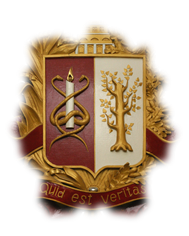Issue: 2018, Vol. 23, No. 1
LASER HEMOTHERAPY IN COMPLEX TREATMENT OF ISCHEMIC STROKE: TECHNIQUE SELECTION IN DEPENDENCE ON PATIENT HEMORHEOLOGIC PROFILE
- Keywords
- ischemic stroke, laser hemotherapy, hemorheologic parameters
- Abstarct
- Objective is to compare the effectiveness of two standard over-vein techniques of laser hemotherapy in complex treatment for patients with ischemic stroke in acute phase of the disease on the base of clinical and hemorheologic parameters. Material and methods. The dynamics of clinical and hemorheologic parameters in 100 patients with diagnosed hemisphere ischemic stroke, aged 50-75 years with neurologic deficiency of light and moderate severity on the background of low intensity laser blood irradiation was investigated, so as in the control group which was given the imitation of quantum therapy. Two standard over-vein techniques of laser hemotherapy (in red diapason of wave length in permanent regime and in infra-red diapason in impulse regime) were used. Results. In patients with ischemic stroke the supplementary impact on blood of low intensity laser irradiation in infra-red spectrum and impulse regime (group 2) inhibited the processes of pathologic transformation of erythrocytes (in comparison with control group) and in red diapason and permanent regime (group 1) not only inhibited but significantly decreased the manifestation of irreversible transformation of red blood cells (p < 0.05) and was conducive to their deformability increase (rigidity index decrease, p < 0.02). Both the decrease of erythrocyte aggregation activity in the form of the diminishment of aggregate average size (p < 0.05) and aggregation index with proportional rise of non-aggregated cells percentage (p < 0.01) were marked but the trustworthy improvement of erythrocytes architectonics in the first group was not revealed. In the control group besides the deterioration of erythrocytes architectonics parameters in the form of the diminishment of their reversible transformation the alterations of the examined cellular hemorheology indices were not statistically significant. Conclusions. Low intensity laser blood irradiation exerted normalized influence on microhemorheologic parameters and the examined techniques of laser hemotherapy had some differences in favorable impact on erythrocyte rheologic properties.


 Маслов
Маслов